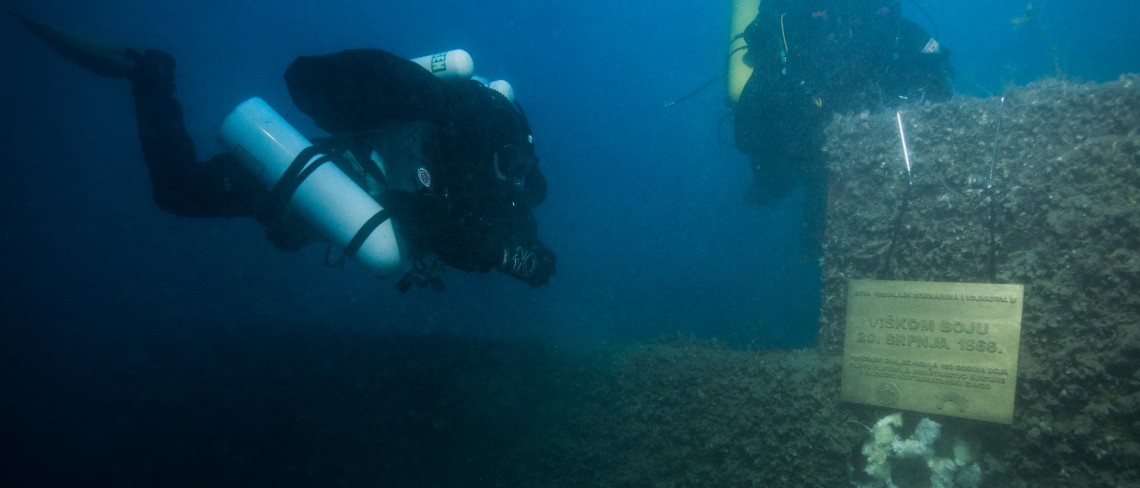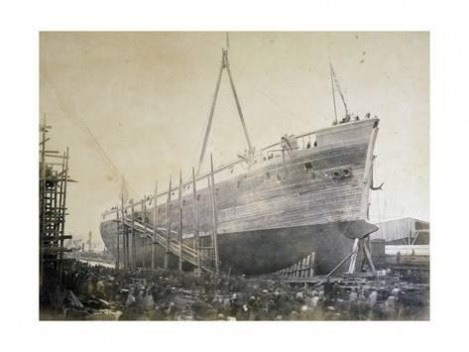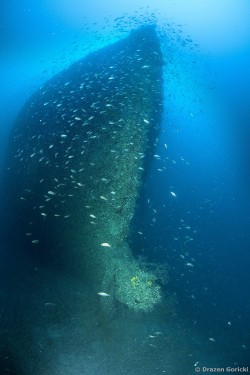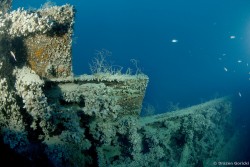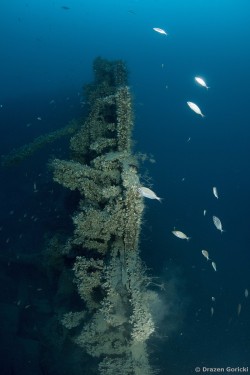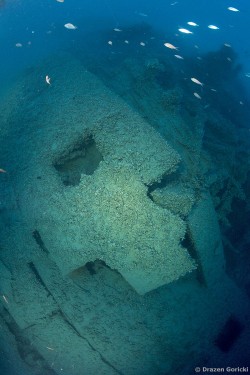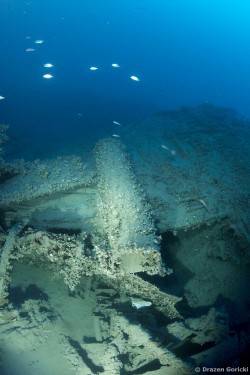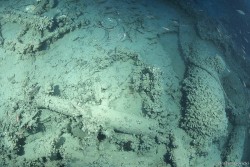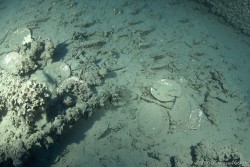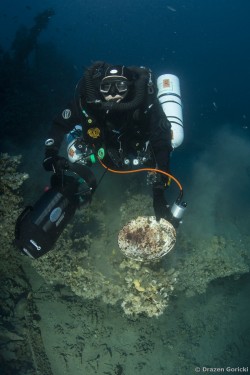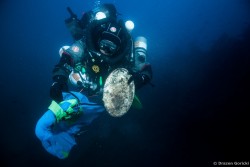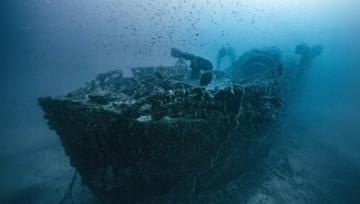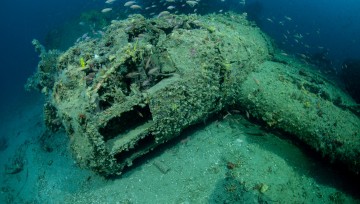The wreck of Re d’Italia was left only in the imaginations of dreamers and underwater adventures for 150 years. Numerous attempts were made to find the wreck, starting in the 1950. Just the prestige of finding it first was incentive enough, but the (doubious) stories of gold coins left on the wreck made it much much more alluring.
Re d’Italia was a ironclad frigate, a wooden ship heavily armored with iron plates on it’s side.
Ordered in 1861. from William H. Webb shipyard in New York, USA it was to be the first in a new class of ships that was to bear that name.
99.61 meters long, 16.76 meter wide and with a draft of 6.17 meters she was a behemoth.
For mid range propulsion she had a 1.700HP single-expansion steam engine powering a single screw propeller anabeling her at full power the speed of 13 knots and a range of 1800 nautical miles.
For long distance travel she was also outfitted with 3 barque rigged masts.
Above the water line she was protected with 11.4 cm of iron.
The ship was also fitted with a state of the art spur-shaped ram at it’s bow made for close quarters combat.
For armaments she had 32*164mm muzzle loaded cannons with riffeling and 6*200mm smoothbore guns making her one of the most heavily armed ships in the Mediterranean.
Re d'Italia under construction
Along with her Italy also ordered one more Re d’Italia class ships, Re d’Portogallo.
The purpose of the ships was to establish Italian supremacy in the Adriatic right after the 1861 unification of Italy. Both of them were commissioned into Regia Marina in September 1864.
Re d’Italia entered combat for the first, and last time during the Third Italian War of Independence.
After Austrias attempted blockade of Ancona on June 27th and the Italians defeat at the Battle of Custoza a political decision was made to attack the island of Vis (or Lissa in Italian) and take control of it as a base for further operations.
Vis was the most important island in the Adriatic, and maybe even Europe at the time. Located right in the middle of the Adriatic it offered a safe, defendable port with access to fresh water and other supplies. A nickname given to it was :”The key to the Adriatic”
Those who controlled Vis could have complete control of shipping in the east Adriatic, thus enabling supply lines to the whole of central and eastern Europe.
Commander for the Italian fleet was to be Admiral Carlo Pellion di Persano, a experienced veteran of the Italian unification war. He took the fleet out of Ancona first on 7th of July 1866 but found no resistance offered from the Austrians. Emboldened he decided for a swift preparation and departed for Vis on the 16th.
The plan was for most of the ships to bombard the port of Vis, followed by a landing and taking of the coastal defences by infantry forces. The plan did not turn out as expected so the first and second attack were completely fought off with minimal casualties to the defender on Vis.
A decision was made to attempt a third one on the morning of the 19th however it was stopped as news of Admiral Wilhelm von Tegetthoffs fleet approaching reached Persano.
Persano turned out to be less than capable at military command and naval strategy, so on the morning of 20th July 1866 he decided to switch his command from Re d’Italia to a more secure ship, Affondatore that was located in the back of the Italian fleets formation. During that move he neglected to inform the rest of the ships in the fleet of the change so as the 2 navies clashed the Italian side was left without a commander.
Credited to the Austrian expansive spy network Tegetthoff knew exactly the weak spot of Re d’Italia. Although heavily armored above the water line her stern and rudder were defenseless. Under the assumption that Re d’Italia was still the admiral ship of the Italian navy they focused fire on it and destroyed it’s maneuvering capabilities. The captain of Re d’Italia Emilio Faà di Bruno decided to fall back and attempted to reverse course but during the maneuver the Austrian flagship Erzherzog Ferdinand Max rammed into the center of the ship and in a matter of minutes Re d’Italia rolled to port and sank.
Out of a 566 man crew only 166 were saved, captain Emilio Faà di Bruno went down with his ship.
Sinking of Re d'Italia has been a inspiration for many artists.
Loss of Re d’Italia was devastating not just to the Regia Marina but the whole Italian war effort and in the long run affected the course of World War 1 and the current national borders in the Adriatic. Along that it showed a glaring fault in the naval strategies of the time. One of the most advanced ships in the world was sunk in seconds by a ram, a maneuver used all the way back by Ancient Romans.
The wreck of Re d’Italia was left only in the imaginations of dreamers and underwater adventures for over almost 150 years. Numerous attempts were made to find the wreck, starting in the 1950s. Just the prestige of finding it first was incentive enough, but the (doubious) stories of gold coins left on the wreck made it much much more alluring.
It wasn’t until 2003 that a team of Croatian archeologist led by Jasen Mesić and sponsored by COMEX found the wreck. Janus was a state of the art COMEX vessel used for deep sea research, equipped with state of the art sonar, ROVs and even a manned submersible. It scanned the sea bed for days with no avail. Only with some information given to them by a passing fisherman they managed to find… something. During the first exploration with an ROV the visibility on the wreck was so poor that nothing could be discerned except that that it was a wreck However on the second day out of the gloom the ROVs searchlights emerged the rostrum, the ships ram, that could only belong to Re d’Italia.
The wreck today lies at 110 meters depth, in one piece and upright. Mostly left undisturbed it is still filled to the brim with artefacts and mysteries. It has been visited by less than 10 expeditions, 3 of them organized by Veljano Zanki, owner of the B-24 Diving Center, including the first ever Italian dive expedition, the result of those show a marvelous wreck only available to the most experienced of tech divers.
